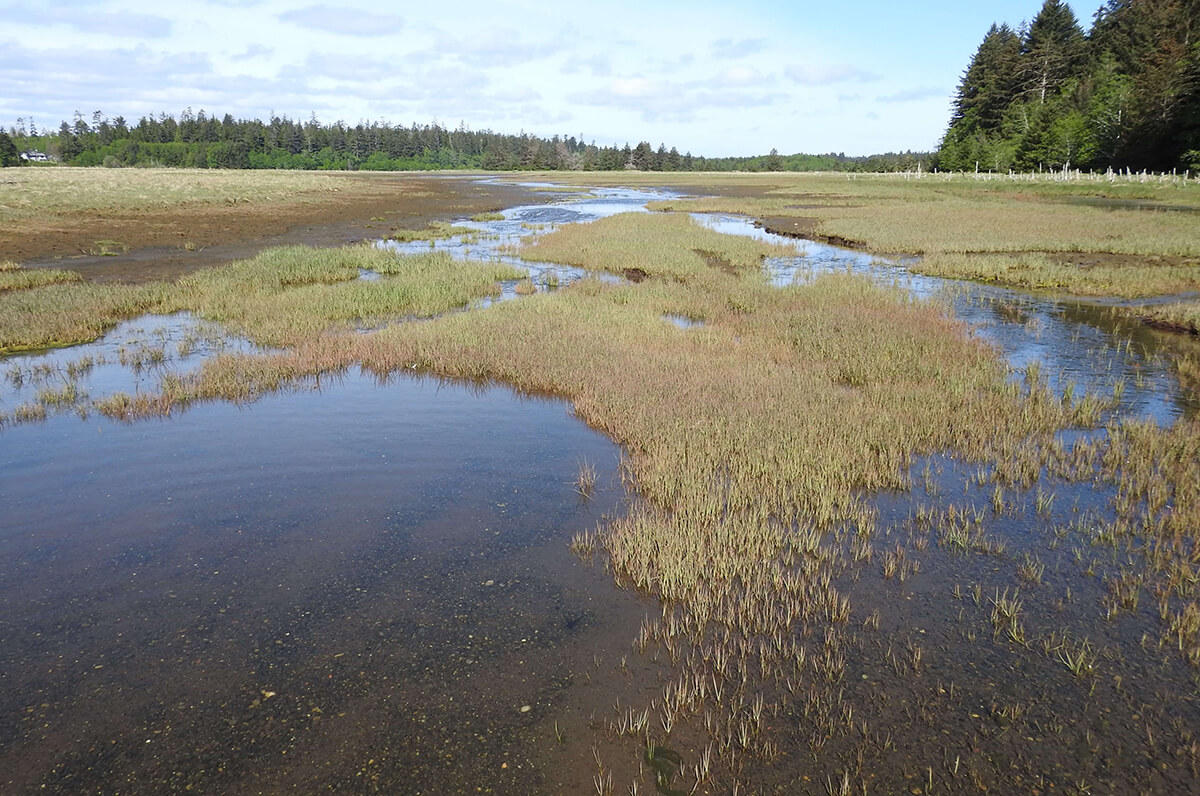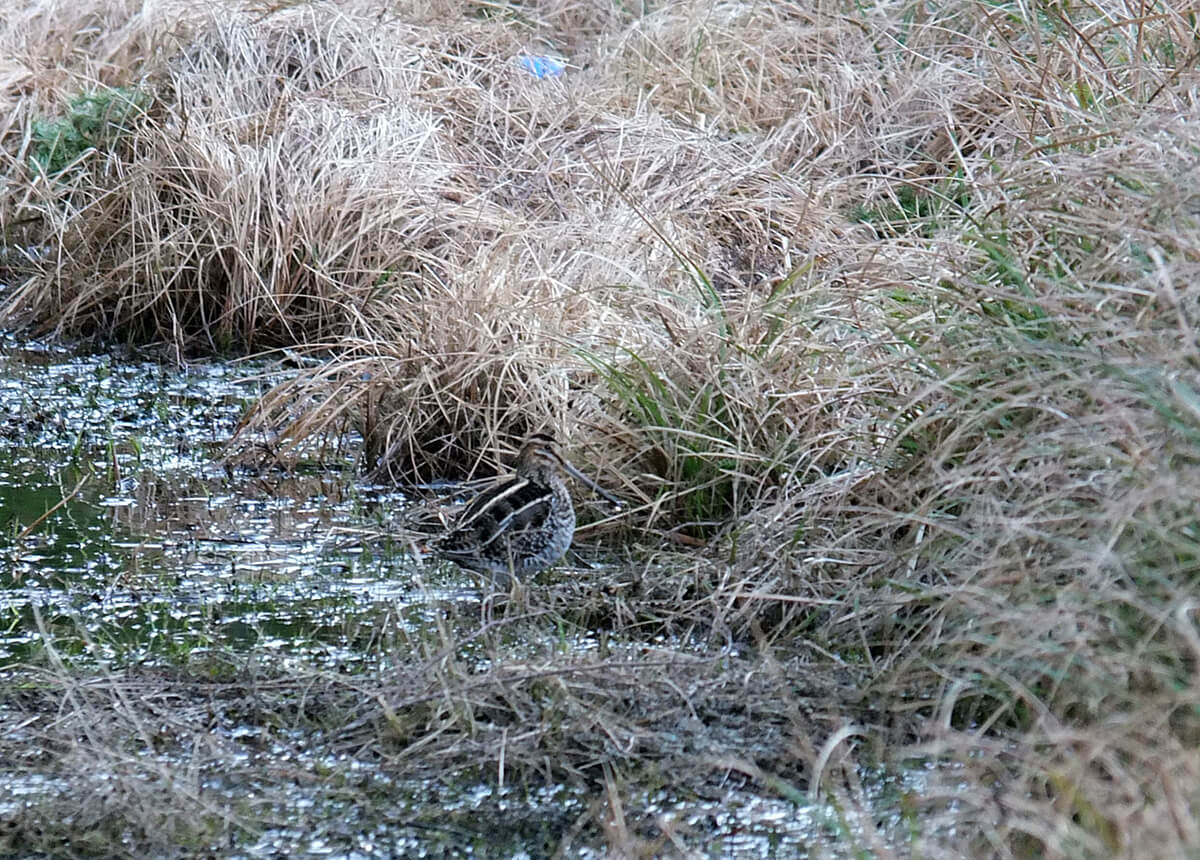| A Naturalist's Almanac: The Snipe Report |
 |
| Written by Margo Hearne |
| 10 February 2022 |
|
Snipe are the shorebird of the field. It doesn’t seem to make sense, but it’s true. According to numerous bird identification books, they are “inconspicuous along grassy edges of ponds or among muddy stubble in flooded fields,” not along the shore. But “shorebird” is their classification.
The damp and difficult terrain of the Wilson's Snipe What do we know about snipe? We know they nest in wet meadows and long grass near water. Many Wilson’s Snipe, the North American species, nested in Delkatla Wildlife Sanctuary in the mid-1980’s and could be heard “winnowing” over Delkatla in summer. That is, they flew high and, when they dove, the wind riffled through their tail feathers and created a distinctive “whe-whe-whe” sound. It was their aerial, territorial dance. While habitat restoration was critical to Delkatla’s survival as an intertidal estuary, Wilson’s Snipe was one of the species that, sadly, lost its nesting grounds. Our surveys out there in the 80’s showed that four eggs were laid, and after ten to fifteen days of gestation four chicks ran away from their nest only about forty eight hours from when they hatched. They are precocial (meaning they can move around on their own shortly after hatching), unlike songbird chicks, which remain in the nest for a few weeks, depending on the species. Snipe don’t usually spend the winter in large numbers here, however during the 2019 Christmas Bird Count we counted ninety-six. Exceptional. There have been years when we were lucky to even see one. Perhaps the mild weather and constant winter storms that year drew them in. The high water also helped to create perfect conditions for them. Wilson’s Snipe are really hard to see. They feed in the late evening and are very secretive. Little is known of their history as they don’t wander around in the open waiting to be photographed, but hide in the long sedge grass until almost stepped upon. Then they take off with a harsh “scresh” and dart away, zig-zagging low and landing quickly somewhere else. Then they run and hide until almost underfoot again. It can be startling, especially when one is creeping along trying to get a photo of a rare bird. Snipe have a really long bill and very short legs. They have sharply delineated white stripes along the back which contrasts clearly with their brown feathering. During fall and winter they are sometimes seen in town probing with their long bill through the soft moss of what was once a grassy lawn. This suits the bird, who eats earthworms, crane fly larva, beetles and other bugs, so they are to be encouraged if seen in your yard. They have come from somewhere else, and their high numbers attest to their ability to survive in damp and difficult terrain.
Wilson's Snipe in its favourite habitat
Article and Photos by Margo Hearne
|











